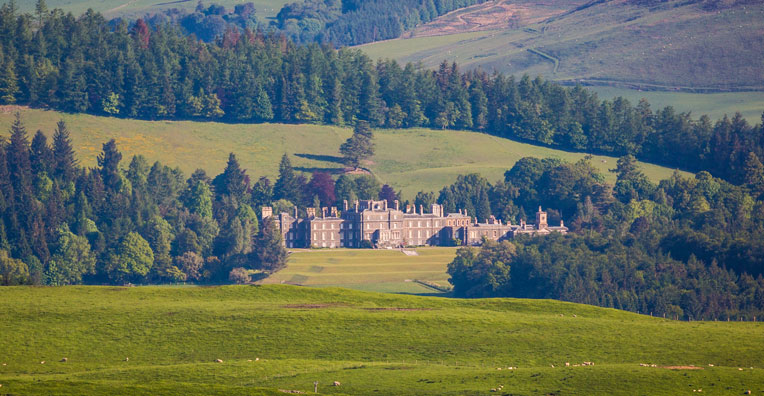History
Bowhill’s starring role in Scottish history
The tales of the Buccleuch family and Bowhill are almost as old as the nation of Scotland itself.
A vast woodland once covered all of the hills, valleys and riversides here – the Ettrick Forest. In 1322, King Robert the Bruce gave it to the Scott clan, the ancestors of today’s Buccleuch family, in recognition of their loyalty.
The name Buccleuch, the object of much misspelling and poor pronunciation, originates from the 10th century when legend has it that King Kenneth III was hunting in a deep ravine or ‘cleuch’ in the heart of the forest, when a young buck became cornered and charged towards the unarmed King. A young man named John Scott seized the buck by the antlers and wrestled it to the ground, saving the King’s life. From that day, the Scotts were referred to as Buccleuch (bəˈklu), the ‘buck from the ravine’ and were rewarded for their bravery.
The forest reverted to the Crown in 1450 and for a hundred years was a favourite hunting ground of the Kings of Scotland. In about 1550 it was distributed to members of the Scott family.
The present house at Bowhill dates mainly from 1812 and was greatly expanded during the 19th century by architects including William Atkinson, William Burn and David Bryce. Sir Walter Scott, a kinsman and frequent visitor, admired the house so much he christened it ‘Sweet Bowhill’ in his famous poem, ‘The Lay of the Last Minstrel’.
Bowhill House served as a military hospital in the first World War and was also occupied by the Army from 1939-45 during World War II. The House suffered after, with dry rot and general wear and tear taking their toll.
It has taken the concerted efforts of a team of skilled and devoted craftsmen and volunteers, as well as the support of visitors, all of whom have been guided by the Family’s passion and commitment to the cause, to save the original structure. The House’s superb art treasures, including 18th century hand-painted Chinese wallpapers, numerous famous paintings and thousands of books are also now safe for future generations.
Today, Bowhill’s imposing situation, elegant proportions and impressive cultural collections help make it one of the Scottish Borders’ most popular visitor attractions.





